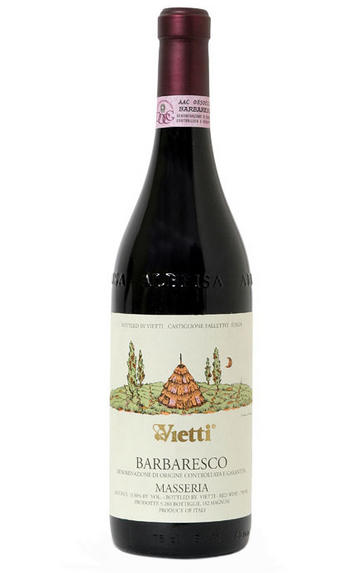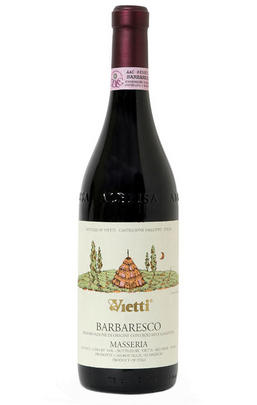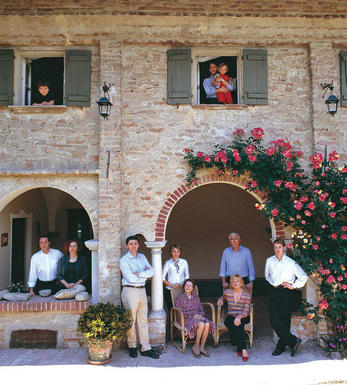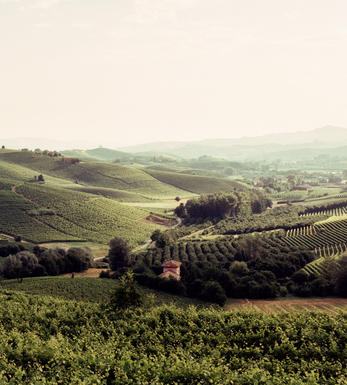
2018 Barbaresco, Roncaglie Masseria, Vietti, Piedmont, Italy

Critics reviews
This wine shows its MGA name “Roncaglie” on the front label for the first time. That’s because Vietti recently acquired additional land in this cru site. The total holdings now span two hectares of vines. The 2018 Barbaresco Roncaglie Masseria is made as if it were a Barolo (instead of a Barbaresco) and is released one year after its peers. It shows tart fruit and dried cranberry with some mild spice and tarry smoke from two years in large oak casks. Exactly 5,026 bottles were made.
Drink 2024 - 2038
Monica Larner, Wine Advocate (June 2022)
Complex aromas of blackberries and black truffle with some lavender. Full-bodied with velvety tannins that spread across the palate. Rich and deep on the finish, showing fantastic length and gravitas. Better after 2025.
James Suckling, JamesSuckling.com (December 2022)
About this WINE

Vietti
The Vietti family has been producing wine for four generations in Castiglione Falletto, at the heart of the Barolo area. Carlo Vietti founded the winery in the 1800s and his son Mario and the next generations carried on his legacy, focusing on improving the production.
Then, in 1952, Alfredo Currado (Luciana Vietti’s husband) was one of the first to select and vinify grapes from single vineyards (such as Brunate, Rocche and Villero). This was a radical concept at the time, but today virtually every vintner making Barolo and Barbaresco wines offers “single vineyard” or “cru-designated” wines.
Today, the winery is in the hands of Luca Currado Vietti and is considered to be one of the very best Piedmont producers. Their wines are highly sought-after, with beautifully designed labels as well as wonderful wine. In 1970, Alfredo and Luciana decided to support to some local artists and have selected labels turned into artworks. Artists such as Gianni Gallo, Eso Peluzzi, Pietro Cascella, Mino Maccari, Pier Paolo Pasolini, Claudio Bonichi, Valerio Miroglio, Pierflavio Gallina, Gioxe de Micheli, have had their works displayed to a much wider audience via the bottles of Vietti wines. In 1996 the most recent artist series label came from American realist Janet Fish on Vietti’s 1990 Barolo “Villero.” The whole collection of artist labels was shown at the Museum of Modern Art of New York

Barolo
Located due south of Alba and the River Tanaro, Barolo is Piedmont's most famous wine DOCG (Denominazione di Origine Controllata e Garantita), renowned for producing Italy's finest red wines from 100 percent Nebbiolo.
Its red wines were originally sweet, but in 1840 the then extant Italian monarchy, the House of Savoy, ordered them to be altered to a dry style. This project was realised by French oenologist Louis Oudart, whose experience with Pinot Noir had convinced him of Nebbiolo's potential. The Barolo appellation was formalised in 1966 at around 1,700 hectares – only a tenth of the size of Burgundy, but almost three times as big as neighbouring Barbaresco.
Upgraded to DOCG status in 1980, Barolo comprises two distinct soil types: the first is a Tortonian sandy marl that produces a more feminine style of wine and can be found in the villages of Barolo, La Morra, Cherasco, Verduno, Novello, Roddi and parts of Castiglione Falletto. The second is the older Helvetian sandstone clay that bestows the wines with a more muscular style. This can be found in Monforte d'Alba, Serralunga d'Alba, Diano d'Alba, Grinzane Cavour and the other parts of Castiglione Falletto. Made today from the Nebbiolo clones Lampia, Michet and Rosé, Barolo has an exceptional terroir with almost every village perched on its own hill. The climate is continental, with an extended summer and autumn enabling the fickle Nebbiolo to achieve perfect ripeness.
Inspired by the success of modernists such as Elio Altare, there has been pressure in recent years to reduce the ageing requirements for Barolo; this has mostly been driven by new producers to the region, often with no Piedmontese viticultural heritage and armed with their roto-fermenters and barriques, intent on making a fruitier, more modern style of wine.
This modern style arguably appeals more to the important American market and its scribes, but the traditionalists continue to argue in favour of making Barolo in the classic way. They make the wine in a mix of epoxy-lined cement or stainless-steel cuves, followed by extended ageing in 25-hectoliter Slavonian botte (barrels) to gently soften and integrate the tannins. However, even amongst the traditionalists there has been a move, since the mid-1990s, towards using physiologically (rather than polyphenolically) riper fruit, aided by global warming. Both modernist and traditional schools can produce exceptional or disappointing wines.
Recommended traditionalist producers:
Giacomo Borgogno, Giacomo Conterno, Bruno Giacosa, Elio Grasso, Marcarini, Bartolo Mascarello and Giuseppe Mascarello.
Recommended nmdernist producers:
Azelia, Aldo Conterno, Luciano Sandrone, Paolo Scavino and Roberto Voerzio

Nebbiolo
Nebbiolo is the grape behind the Barolo and Barbaresco wines and is hardly ever seen outside the confines of Piedmont. It takes its name from "nebbia" which is Italian for fog, a frequent phenomenon in the region.
A notoriously pernickety grape, it requires sheltered south-facing sites and performs best on the well-drained calcareous marls to the north and south of Alba in the DOCG zones of Barbaresco and Barolo.
Langhe Nebbiolo is effectively the ‘second wine’ of Piedmont’s great Barolo & Barbarescos. This DOC is the only way Langhe producers can declassify their Barolo or Barbaresco fruit or wines to make an early-drinking style. Unlike Nebbiolo d’Alba, Langhe Nebbiolo can be cut with 15% other red indigenous varieties, such as Barbera or Dolcetto.
Nebbiolo flowers early and ripens late, so a long hang time, producing high levels of sugar, acidity and tannins; the challenge being to harvest the fruit with these three elements ripe and in balance. The best Barolos and Barbarescos are perfumed with aromas of tar, rose, mint, chocolate, liquorice and truffles. They age brilliantly and the very best need ten years to show at their best.


Buying options
Add to wishlist
Description
This wine shows its MGA name “Roncaglie” on the front label for the first time. That’s because Vietti recently acquired additional land in this cru site. The total holdings now span two hectares of vines. The 2018 Barbaresco Roncaglie Masseria is made as if it were a Barolo (instead of a Barbaresco) and is released one year after its peers. It shows tart fruit and dried cranberry with some mild spice and tarry smoke from two years in large oak casks. Exactly 5,026 bottles were made.
Drink 2024 - 2038
Monica Larner, Wine Advocate (June 2022)
wine at a glance
Delivery and quality guarantee